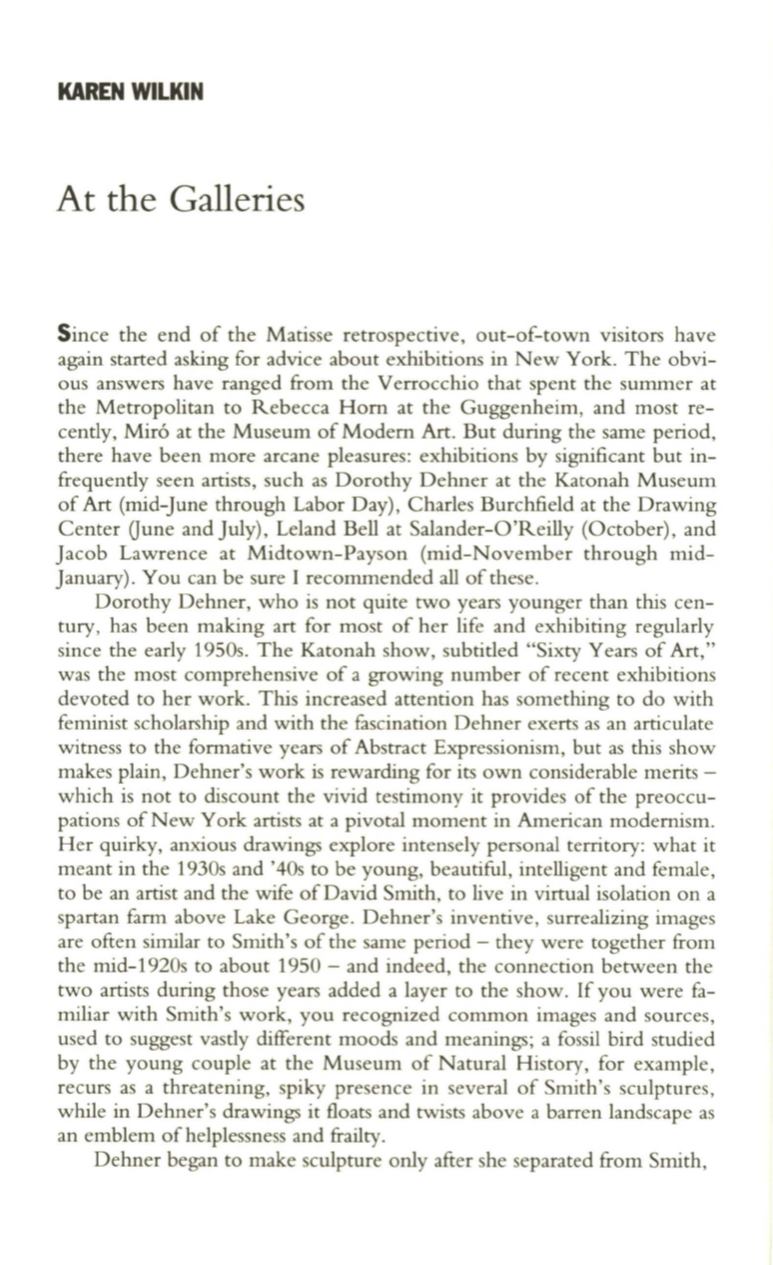
KAREN WILKIN
At the Galleries
S ince the end of the Matisse retrospective, out-of-town visitors have
again started asking for advice about exhibitions in New York. The obvi–
ous answers have ranged from the Verrocchio that spent the summer at
the Metropolitan to Rebecca Horn at the Guggenheim, and most re–
cently, Mir6 at the Museum of Modern
Art.
But during the same period,
there have been more arcane pleasures: exhibitions by significant but in–
frequently seen artists, such as Dorothy Dehner at the Katonah Museum
of Art (mid-June through Labor Day), Charles Burchfield at the Drawing
Center Oune and July), Leland Bell at Salander-O'Reilly (October), and
Jacob Lawrence at Midtown-Payson (mid-November through mid–
January). You can be sure I recommended
all
of these.
Dorothy Dehner, who is not quite two years younger than this cen–
tury, has been making art for most of her life and exhibiting regularly
since the early 1950s. The Katonah show, subtitled "Sixty Years of Art, "
was the most comprehensive of a growing number of recent exhibitions
devoted to her work. This increased attention has something to do with
feminist scholarship and with the fascination Dehner exerts as an articulate
witness to the formative years of Abstract Expressionism, but as this show
makes plain, Dehner's work is rewarding for its own considerable merits -
which is not to discount the vivid testimony it provides of the preoccu–
pations of New York artists at a pivotal moment in American modernism.
Her quirky, anxious drawings explore intensely personal territory: what it
meant in the 1930s and '40s to be young, beautiful, intelligent and female ,
to be an artist and the wife of David Smith, to live in virtual isolation on a
spartan farm above Lake George. Dehner's inventive, surrealizing images
are often similar to Smith's of the same period- they were together from
the mid-1920s to about 1950 - and indeed, the connection between the
two artists during those years added a layer to the show. If you were fa–
miliar with Smith's work, you recognized common images and sources,
used to suggest vastly different moods and meanings; a fossil bird studied
by the young couple at the Museum of Natural History, for example,
recurs as a threatening, spiky presence in several of Smith's sculptures,
while in Dehner's drawings it floats and twists above a barren landscape as
an emblem ofhelplessness and frailty .
Dehner began to make sculpture only after she separated from Smith,


